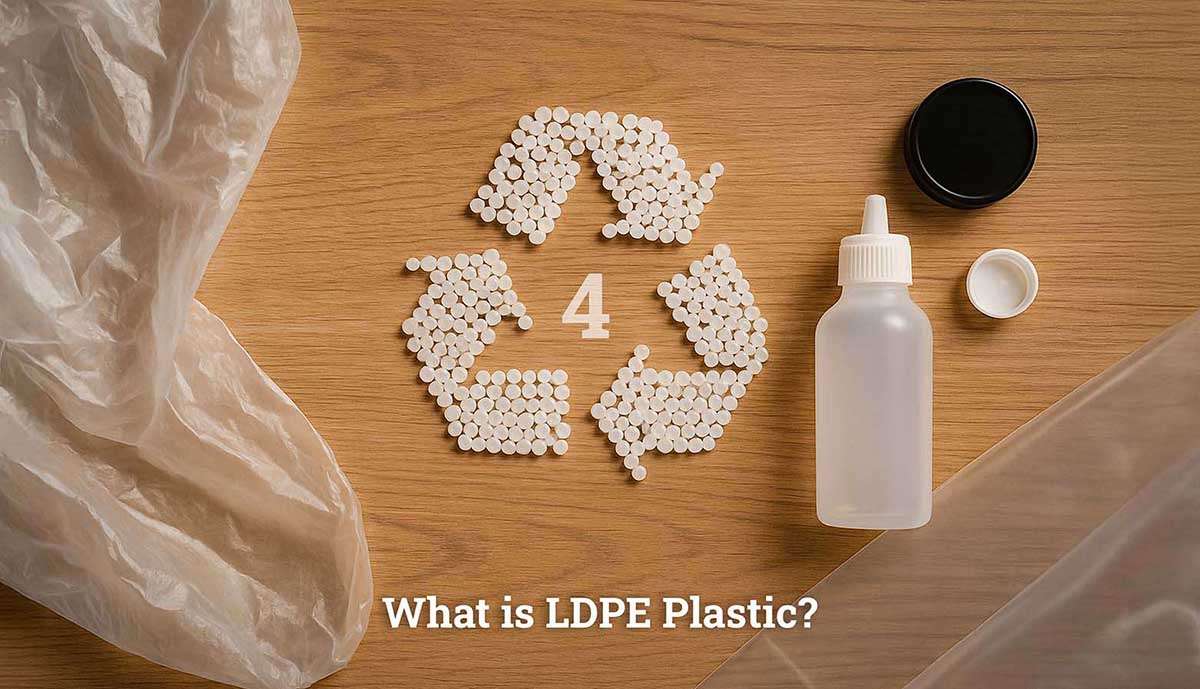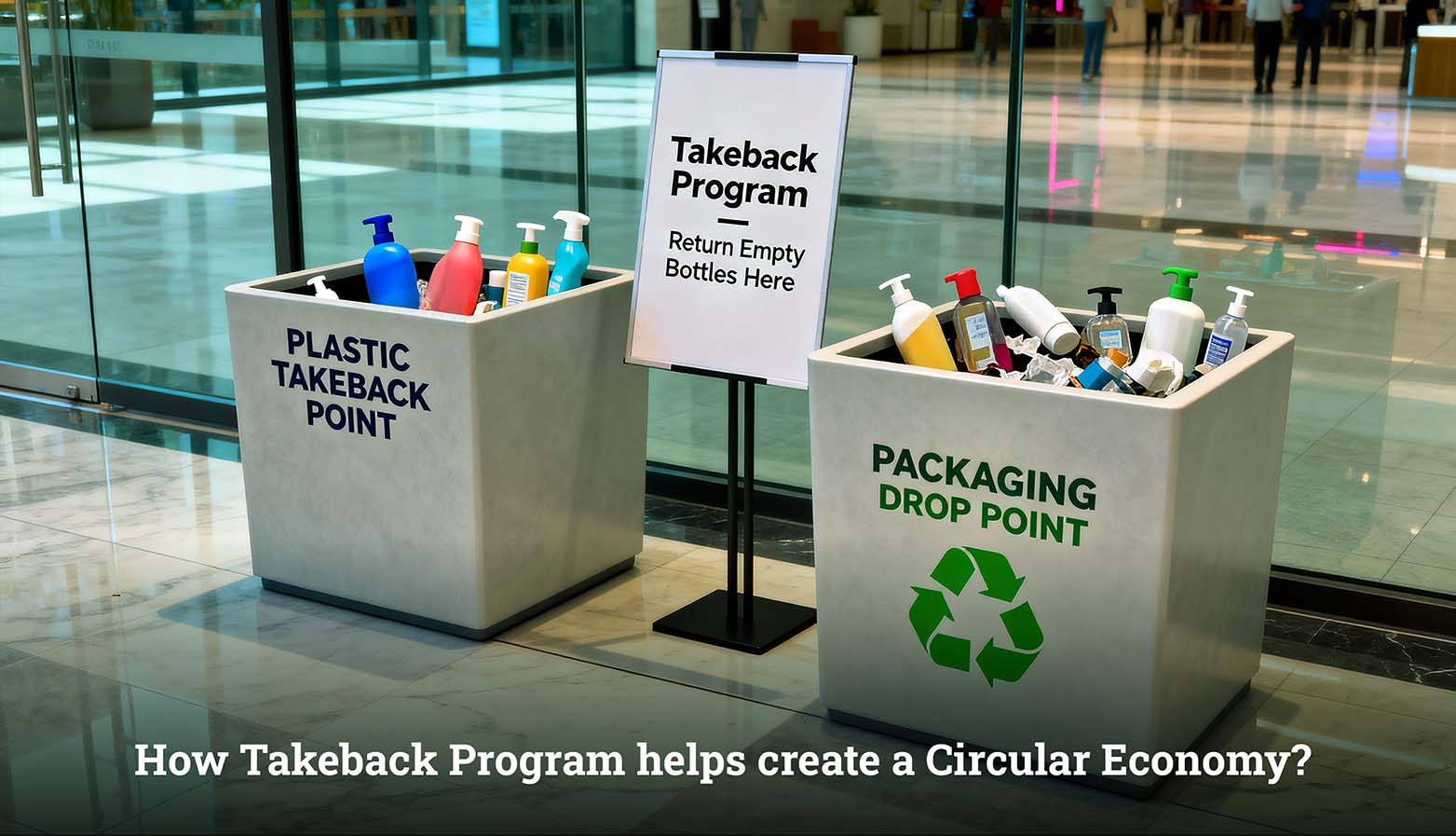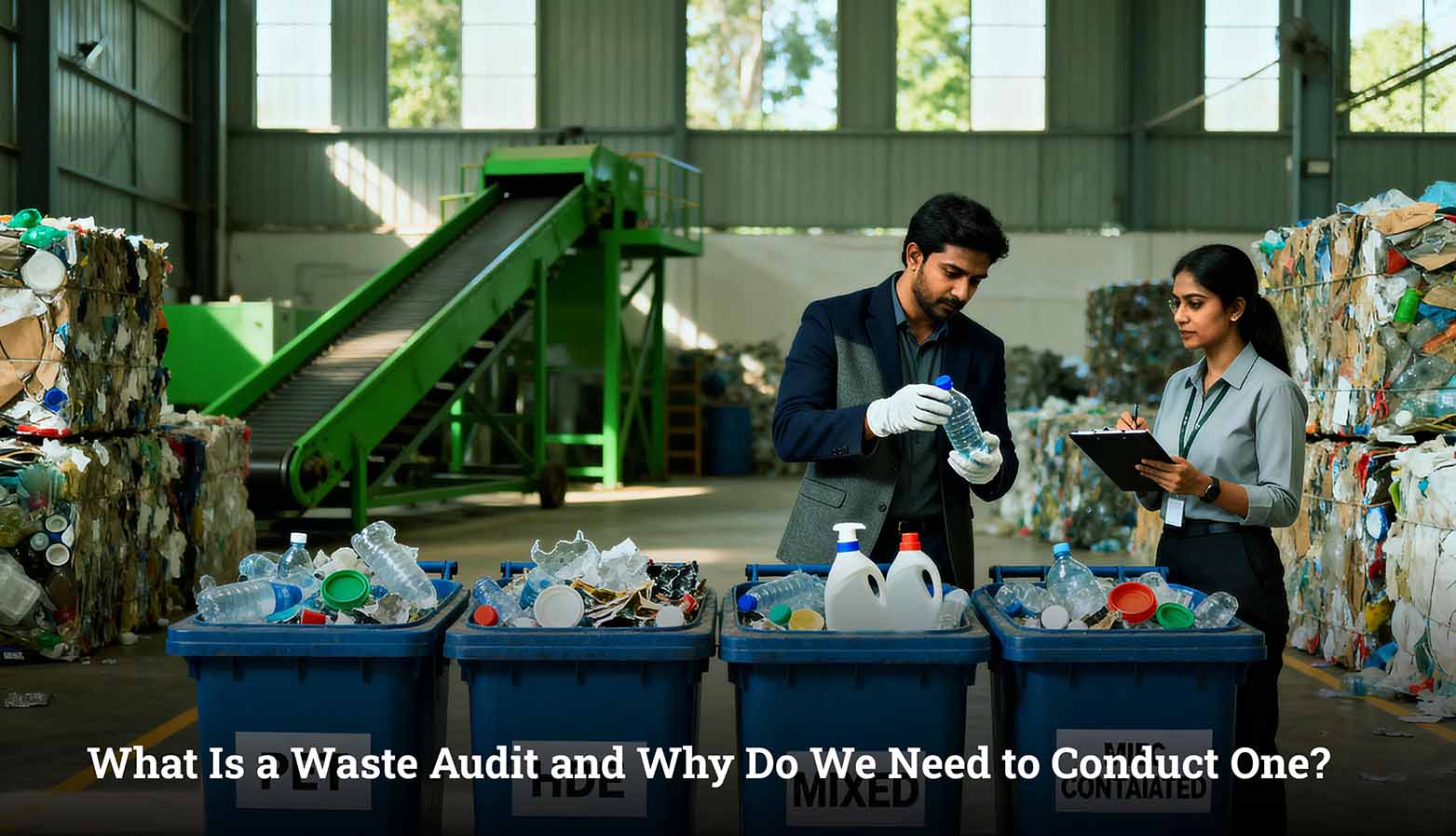Plastics like LDPE, or low density polyethylene, are now used all over the world as they are cost-effective and durable. The durable yet flexible material is the pillar of the modern industry due to its extensive use, ranging from packaging food to supermarket bags. In order to achieve a sustainable planet one must understand the extent of what LDPE is and efficient recycling techniques for it. Let us take a look into the world of LDPE plastic material, its properties, uses, and recyclability.
LDPE is a branched, petroleum thermoplastic that is designed to enable maximum flexibility and durability. LDPE is not as dense as its alternative, high-density polyethylene plastic (HDPE), which makes it softer and flexible. The flexibility of LDPE makes it perfect for applications from medical supplies to packaging and recycled plastics.
LDPE products run the gamut from farm film to squeeze containers and fill up every conceivable industry. But widespread use also lends itself to consideration of environmental stewardship and recyclability, topics we’ll take up in this blog. Educating ourselves on ldpe applications and their lifecycle helps us to make informed decisions to reduce waste and encourage sustainability.
Applications of LDPE Plastics
Low density polyethylene plastic material is valued for its flexibility, and it is a first-choice raw material option in many industries. The advantages from the creation of thin, flexible films to having resistance to moderate stress has resulted in various low density polyethylene plastic applications :
Packaging Films
Applied to plastic bags, shrink wraps, and food packaging because of their clarity and flexibility.
Containers
Squeeze bottles, lids, and caps are enhanced by LDPE’s soft but strong quality.
Agricultural Films
Greenhouse covers and mulch films depend on LDPE for weather protection.
Pipes and Fittings
Irrigation pipes and flexible tubing utilize LDPE due to corrosion resistance.
Consumer Goods
LDPE products are used in toys, household wraps, and paper carton coatings.
Properties of LDPE
The properties of low-density polyethylene (ldpe) plastic are a result of the molecular structure, which enables it to find a balance between strength and flexibility.
Flexibility
The chain structure of LDPE plastic makes it best suited for films and pouches.
Chemical Resistance
Lasts long in harsh environments as it has resistance towards acids, bases, and alcohols.
Low Density
Reduces material cost and weight as it is less dense than other plastics.
Transparency
Crystalline structure of LDPE results in transparency and allows for use in the production of transparent packaging.
Moisture Resistance
Extends shelf life for food products and provides moisture protection for packaged products used in the food and pharmaceutical industries.
Recyclability
Most LDPE plastic products can be collected and reprocessed to make new products.
Advantages & Disadvantages of LDPE
Let’s look at the advantages and disadvantages of LDPE, which will determine its applicability for different purposes.
Advantages
Cost Effective
Cheap to manufacture, making recycled LDPE granules an economical raw material option.
Adaptable
Adaptable for use in a variety of products, from films to molded products.
Reusable
Processed into new LDPE products, enabling circular economies.
Lightweight
Lowers shipping costs and energy consumption for manufacturers.
Disadvantages
Lower Strength
LDPE has low tensile strength, limiting it to light-weight applications.
Environmental Issues
Leads to pollution if LDPE plastic material is disposed of inappropriately.
Thermal Sensitivity
Limited applications in heated conditions as it melts at low temperatures.
How to Properly Recycle LDPE
Proper recycling of low density polyethylene is important in minimizing plastic waste and saving resources. This ensures LDPE granules can be recycled effectively.
Collection
LDPE products, such as plastic bags and films are collected by businesses for baling. There are also established distribution centres that lead collections efforts and transport baled products to LDPE recycling centres for sorting and processing.
Processing
At recycling centres, cleaned and sorted LDPE products are shredded, melted, and re-molded into granules for producing new products.
Reuse
Reused LDPE is utilized to produce bags, pipes, etc.
Innovations and Future Trends in LDPE
The future of LDPE plastic is evolving with technical and sustainability developments. Technical innovations in the use of LDPE target reducing environmental effects while maintaining performance.
Bio-Based LDPE
Made from renewable resources like sugarcane to reduce the reliance on fossil fuels.
Recycling of LDPE
LDPE is broken down through chemical recycling and mechanical recycling processes into its higher-quality recycled polymers for reuse.
Biodegradable Additives
Research on additives that make LDPE degrade faster is gaining popularity.
Conclusion
Low-density polyethylene (LDPE) is an inexpensive and durable plastic that is used in packaging, agriculture, and pharmaceutical industries. Provided it is treated appropriately, it is non-biodegradable but recyclable, thus ideal for plastic manufacturing firms, but it has environmental risks. While reducing the use of LDPE plastic products is the ultimate goal, there is a shift towards sustainable manufacturing through efficient recycling procedures. The processing of LDPE products like LDPE film have various benefits. Recycling LDPE products and the use of recycled polymers is the shift that all industries require to play their part in contributing to a circular economy.
FAQ's
Can LDPE be recycled?
Yes, LDPE plastic material is recyclable. Plastic bags, films, and other LDPE products can be processed into new materials once properly collected and sorted. Commonly used feedstock for recycling of LDPE plastic material is retrieved from packaging materials such as films, carrier bags and squeeze bottles.
What does LDPE stand for?
LDPE stands for low-density polyethylene, a flexible plastic whose molecules have branches in their structure. LDPE has its uses in packing materials across various industries.
What are some sustainable alternatives to LDPE?
Alternatives include bio-based plastics, compostable polymers, and reusable materials like paper or cloth that reduce usage of LDPE plastic. The recycling of post consumer or post industrial LDPE also plays an important role in sustainability for brands and organizations.LDPE products produced with the use of recycled LDPE plastic granules are now seen in the production of grocery bags, trash bags and packing films.
To learn more about plastic granules and their types, read: What Are Plastic Granules? Meaning, Types, and Uses


 What is Takeback Program & Their Role in Building a Circular Economy
What is Takeback Program & Their Role in Building a Circular Economy What Is a Waste Audit and Why Should Recycling Companies Conduct One?
What Is a Waste Audit and Why Should Recycling Companies Conduct One? How Greenwashing Affects Plastic Recycling?
How Greenwashing Affects Plastic Recycling? What is Polypropylene Plastic?
What is Polypropylene Plastic? Why Choose Banyan Nation as your EPR Consultant in India?
Why Choose Banyan Nation as your EPR Consultant in India?

